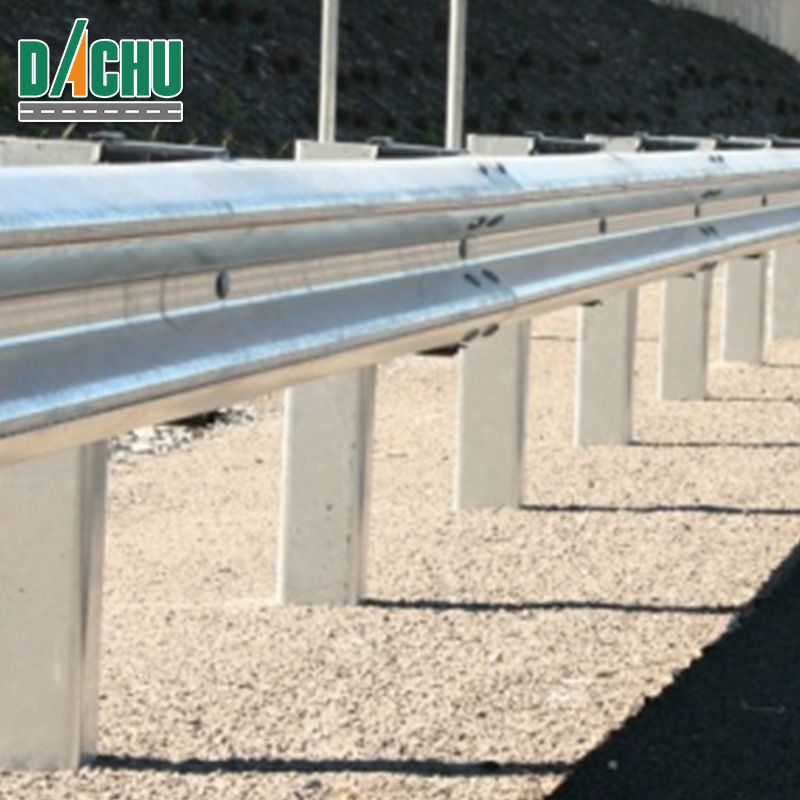Exploring the Benefits and Functionality of W-Beam Highway Guardrails
In the realm of road infrastructure, safety stands as a paramount concern. The introduction of W-beam highway guardrails has revolutionized the protection of motorists and pedestrians alike. These engineered barriers are meticulously designed to minimize the impact of collisions, preventing vehicular accidents from escalating into severe incidents. In this comprehensive guide, we will delve into the world of W-beam highway guardrails, uncovering their features, benefits, and their pivotal role in safeguarding roadways.

W-beam highway guardrails are designed to create a buffer zone between the road and potential hazards, such as embankments, barriers, or oncoming traffic. Their distinctive "W" shape provides a combination of strength, deflection, and energy absorption, effectively redirecting colliding vehicles and preventing them from veering off the road or crossing into opposing lanes.
The Benefits of W-Beam Highway Guardrails
Collision Mitigation
The primary purpose of W-beam highway guardrails is to mitigate the severity of collisions. When a vehicle collides with the guardrail, the rail's unique shape and material composition help absorb and dissipate the impact force, reducing the risk of injury to vehicle occupants.
Vehicle Redirection
W-beam guardrails are engineered to redirect colliding vehicles back onto the roadway or guide them along a designated path. This prevents vehicles from crossing medians or entering oncoming traffic lanes, averting potential head-on collisions.
Energy Absorption
The flexibility of the W-beam design allows it to absorb and dissipate kinetic energy, gradually slowing down and redirecting the colliding vehicle. This controlled deceleration reduces the likelihood of abrupt stops that could lead to secondary accidents.
Retroreflectivity
Many modern W-beam guardrails are equipped with retroreflective elements. These reflective surfaces enhance visibility during low-light conditions, ensuring that drivers can identify the guardrail from a distance.
Cost-Effectiveness
W-beam highway guardrails offer a cost-effective solution to road safety. Their relatively simple design, ease of installation, and proven effectiveness make them a standard choice for road agencies and transportation departments.
Variety of Configurations
W-beam guardrails come in various configurations to suit different road types and conditions. These configurations include standard two-beam systems, transition sections, and end treatments designed to reduce the potential for vehicle snagging.
Applications Across Roadways
Highways and Expressways
W-beam highway guardrails are a common sight on highways and expressways. They provide a critical layer of protection to drivers traveling at high speeds, preventing accidents from turning into catastrophic events.
Rural Roads
Rural roads often have rugged terrain and limited space. W-beam guardrails are instrumental in preventing vehicles from veering off the road and encountering hazardous conditions.
Urban Areas
Even within urban areas, where pedestrian safety is a concern, W-beam guardrails offer a barrier between vehicles and footpaths. They play a vital role in safeguarding pedestrians from errant vehicles.
Bridges and Overpasses
Bridges and overpasses are vulnerable areas due to their elevated nature. W-beam guardrails add an extra layer of protection, preventing vehicles from crashing through barriers and falling onto lower levels.
Conclusion
W-beam highway guardrails stand as a testament to engineering innovation dedicated to road safety. With their capacity to absorb energy, redirect vehicles, and minimize the impact of collisions, they have proven to be a vital component of road infrastructure. As roadways continue to evolve, hot-dip galvanized steel W-beam guardrails remain steadfast in their mission to protect lives and enhance the overall safety of transportation networks.


